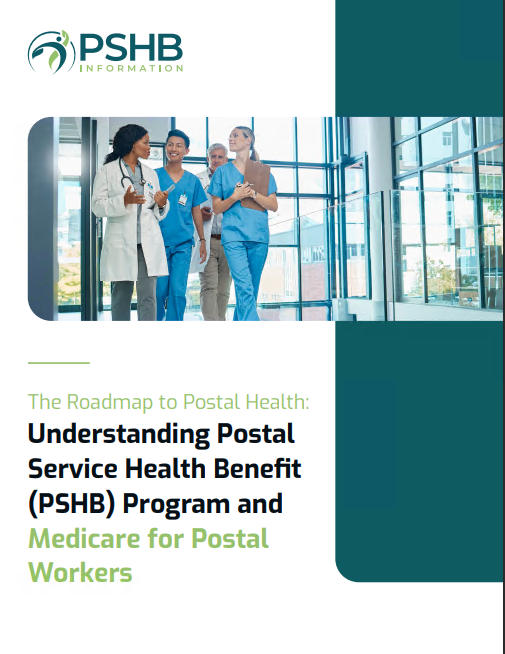Key Takeaways
-
Choosing the right Postal Service Health Benefits (PSHB) plan requires balancing costs with your family’s specific healthcare needs.
-
Carefully evaluating network coverage, prescription drug benefits, and Medicare integration now can save you significant expenses later.
Understanding Your Family’s Unique Health Needs
When you’re preparing to pick a PSHB plan, it’s essential to consider the health profiles of everyone in your household. Whether you have young children, teens who play sports, or elderly parents under your care, each scenario demands a different approach to healthcare coverage. Start by assessing:
-
Regular prescriptions
-
Chronic conditions
-
Frequent specialist visits
-
Planned surgeries or medical procedures
Identifying these areas will help you select a plan that not only meets routine needs but also accommodates unexpected medical situations.
Navigating Plan Types and Networks
Not all PSHB plans are the same, and one of the most crucial decisions you’ll make is choosing the type of plan:
-
Health Maintenance Organizations (HMOs): Typically offer lower premiums and out-of-pocket costs, but you’re limited to in-network providers except in emergencies.
-
Preferred Provider Organizations (PPOs): Offer greater flexibility to see specialists and out-of-network providers without referrals but usually come with higher premiums.
-
High Deductible Health Plans (HDHPs): Ideal if your family is generally healthy, allowing you to take advantage of Health Savings Accounts (HSAs), offering tax benefits and long-term savings.
Evaluate your family’s medical patterns to determine which plan type aligns best with your healthcare habits.
Prescription Drug Coverage: Don’t Skip the Details
Prescription drug costs can quickly add up, especially if someone in your family has regular medication needs. PSHB plans typically include prescription drug coverage, but coverage details can vary significantly. Before finalizing your choice, consider:
-
Formulary Lists: Check if the medications your family currently takes are included and in what tier. Higher-tier drugs often mean higher co-pays or coinsurance.
-
Pharmacy Network: Ensure your preferred pharmacies are included in the plan’s network.
-
Out-of-Pocket Caps: Many PSHB plans now include annual caps on prescription costs, especially when combined with Medicare Part D benefits.
Taking the time to dive into these specifics can prevent unpleasant financial surprises down the road.
Evaluating Premiums vs. Out-of-Pocket Costs
It’s tempting to pick the plan with the lowest monthly premium, but doing so without considering other costs can be risky. Evaluate how much you’re likely to spend annually by considering:
-
Deductibles: The amount you pay before insurance kicks in each year. Lower premiums often mean higher deductibles.
-
Copayments and Coinsurance: Fixed amounts or percentages you pay at the time of service.
-
Out-of-Pocket Maximums: The annual limit you could spend on covered healthcare services.
Balancing a lower monthly premium against potentially higher out-of-pocket expenses is vital, especially for families that frequently access healthcare services.
Medicare Integration: Important Considerations for Retirees
For retirees or family members eligible for Medicare, understanding how your PSHB plan integrates with Medicare can significantly affect your healthcare costs. Here’s what to consider:
-
Medicare Part B Enrollment: Most PSHB plans require eligible retirees and family members to enroll in Medicare Part B to maintain optimal coverage and avoid penalties.
-
Cost Reductions: Many PSHB plans offer reduced or waived deductibles and lower copayments when coordinated with Medicare, significantly reducing overall medical expenses.
-
Prescription Drug Coverage Integration: Medicare-eligible family members receive their prescription coverage through a Medicare Part D Employer Group Waiver Plan (EGWP) integrated within PSHB, simplifying medication management and potentially lowering costs.
Careful evaluation of these factors ensures that retirees and Medicare-eligible dependents maximize their benefits while minimizing out-of-pocket expenditures.
Family Coverage: Assessing the Best Fit
Determining the best PSHB coverage category for your family size and structure—Self Only, Self Plus One, or Self and Family—is another critical decision. Consider:
-
Family Dynamics: If your family includes dependents who frequently need healthcare, the Self and Family option often provides the most comprehensive coverage.
-
Cost Comparison: Carefully compare the premium differences between Self Plus One and Self and Family to see if additional coverage justifies the increased cost.
-
Changing Needs: Remember, you can adjust your plan during annual Open Season or following qualifying life events, such as marriage, divorce, or childbirth, ensuring your coverage remains aligned with your evolving family situation.
Taking these points into consideration will help you secure the most appropriate coverage at the right cost.
Open Season and Qualifying Life Events: When You Can Change Your Plan
Choosing a PSHB plan isn’t a permanent decision; however, there are specific timelines you must adhere to:
-
Annual Open Season: Each year from mid-November through mid-December, you have the opportunity to change your PSHB enrollment. Changes made during Open Season become effective January 1 of the following year.
-
Qualifying Life Events (QLEs): Significant events such as marriage, divorce, birth, adoption, or loss of other healthcare coverage qualify you to make immediate changes outside of Open Season. You typically have 60 days from the event to enroll or adjust your coverage.
Understanding these enrollment periods ensures your family remains covered without interruptions or penalties.
Avoiding Common Pitfalls in Plan Selection
When choosing your PSHB plan, watch out for these common missteps:
-
Overlooking Network Providers: Double-check that your preferred healthcare providers are in-network to avoid unexpected costs.
-
Ignoring Total Costs: Low premiums might look attractive initially but could result in higher total costs if frequent medical services are necessary.
-
Neglecting Prescription Coverage Details: Don’t assume your prescriptions are covered—verify each medication carefully.
-
Not Considering Future Needs: Evaluate not just current healthcare needs but potential future scenarios, like planned medical procedures or pregnancies.
Staying alert to these common pitfalls helps prevent costly mistakes and ensures comprehensive healthcare for your family.
Ensuring Peace of Mind With the Right PSHB Plan
Selecting the right PSHB plan for your family is about more than just healthcare—it’s about peace of mind. Take your time, carefully evaluate each factor, and remember: thorough planning today leads to worry-free healthcare tomorrow. For personalized guidance tailored specifically to your family’s needs, reach out to a licensed agent listed on this website who can assist you in navigating your PSHB options.









